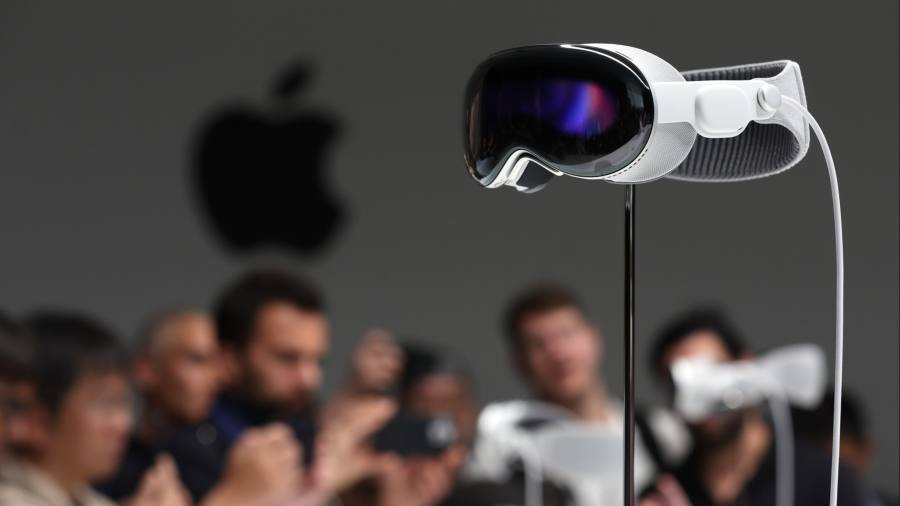There’s building suspense and then there’s forcing your audience to sit through a two hour presentation before announcing that your hotly anticipated, much-delayed virtual reality headsets won’t go on sale until next year.
By the time Apple unveiled its VR goggles on Monday, the share price had lost its intraday record high. Likely culprits include lack of compelling content, a high price tag and the 2024 launch date.
Apple is a pro at classy design and quality presentations. But are VR headsets a good use of its $166bn cash and marketable securities pile? Limited battery life and bulky fits still plague the sector. Meta’s VR unit reported falling revenue and an operating loss of nearly $4bn in the past quarter. Apple has not broken out figures showing the cost of development.
The company’s curved, ski-goggle-style headsets look more comfortable than most. Twelve cameras and various sensors video the real world then overlay VR — meaning wearers can be immersed in online life without tripping over their shoelaces. Instead of handheld devices, controls are hand- or voice-activated. There is a spooky-looking display that shows the wearer’s eyes if people are nearby and an annoying wire attached to an external battery pack.
Display quality is high. The headset has 23mn pixels. As Apple says, that is more than a 4K TV in front of each eye. It is powered by Apple’s own M2 chips and a new chip called R1, part of its ongoing determination to reduce reliance on external suppliers such as Qualcomm and Broadcom.
Apple is rarely first off the block. LG Electronics released a touchscreen smartphone before the iPhone, and Samsung was selling smartwatches before the Apple Watch. But it has a record of selling popular, high-quality versions of hardware.
At $3,499, however, Apple has not priced its Vision Pro to be mass-consumer-friendly. They are seven times more expensive than Meta’s latest version, for example. Yet the presentation was not enterprise-focused, either. Perhaps it hopes to kick-start a new market of apps from third-party developers.
To displace the iPhone’s importance to Apple revenue, it would need to sell nearly 60mn headsets a year. This seems unlikely. Happily for Apple, it has the means to experiment. Free cash flow last year was five times the size of Meta’s. Chief executive Tim Cook can afford to try out VR without betting Apple’s future on the tech.
Read the full article here













